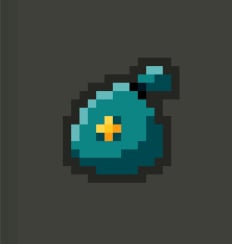I did and all the links back me up and contradict you.
chonglibloodsport
Do you have a citation for that claim? It’s pretty well common knowledge that EVOO is a lower smoke point than typical refined cooking oils.
Stanley is the best!
Only if it’s refined to remove all the suspended solids. When most people think about olive oil they think of EVOO which has a low smoke point and turns very bitter if overheated.
Yes! Beautiful! Can also gently sauté some diced garlic cloves before adding the tomatoes and then top with a bundle of fresh basil while simmering!
This works amazingly well with fresh tomatoes from the garden! Cherry tomatoes make for an especially great sauce!
I think you’ll have the best experience if you learn what seasoning actually is and what it isn’t. Seasoning is polymerized cooking oil that’s bonded to the surface of the metal. It’s hydrophobic which protects the metal from rust. It does not actually give nonstick properties (those are due to cooking oil and proper temperature control).
Seasoning is not burnt food, it’s not black, it’s not dry, nor does it leave marks on your finger when you rub it (only do this with a cold pan). A well seasoned pan should feel smooth and glossy and hard, not dry or powdery or gummy or sticky or greasy. When seasoned properly it does not need anything else applied, though most people apply a thin layer of oil as an extra precaution and because the oil improves the glossy appearance.
One thing to be aware of is that overheating your pan will burn the seasoning, carbonizing it and turning it black. A burned seasoning is vulnerable to flaking off and adding charred flavours to food, as well as exposing the pan to potential rust. Lastly, exposing the pan to acids (such as white vinegar or simmering tomato sauce) will strip away the seasoning (and ruin your sauce).
I wash mine with soap and hot water, then dry and rub a bit of cooking oil on it (high smoke point oil, not olive oil).
I’ve built up a pretty substantial amount of seasoning on mine though. One of the ways to recognize that is that when you’re rinsing it out after washing the water should just bead right off, not wet the surface. Any areas where the water wets the surface could use some touch up seasoning. A well seasoned pan should be nice and hydrophobic.
It’s not about taste, it’s about the culture around Italian food. For some reason, Italian food lovers are extremely aggressive about protecting their favourite cuisine from “inauthentic” recipes.
Italian food is cheating!
Spaghetti carbonara with heavy cream.
High density isn’t the only alternative to suburbia. Walkable villages — the way people lived pretty much everywhere in Europe outside of Paris, London, Berlin etc. — are not suburbs but they’re also not high density apartment blocks.
The difference between a village and suburbia is specialization. Suburbia is specialized to housing only whereas a village is a self-contained community with both housing, small businesses, an industry or two, and surrounding wilderness as well as agricultural land.
Villages are not sprawling, they’re fairly small, and they’re connected into a network of other villages as well as larger towns and cities. In the past, this connection was via a road network (usually unpaved dirt roads for walking or horses, but some cobblestone roads too). Today this connection could be via train and even high speed train.
The real problem though is that we can’t just start over. We’re stuck with the infrastructure and planning choices we already made.


Those are cherry-picked high numbers for EVOO and low numbers for canola oil. I have seen 450F/230C as a more common high end figure. I cook with sunflower oil which ranges 440F-480F and ghee which smokes at 482F.
I would also like to note that the original discussion was about caring for and seasoning cast iron pans which occurs at temperatures close to the smoke point of the oil, not about frying or sautéing. Cast iron pans are often seasoned in the oven and even used for roasting or baking at oven temperatures exceeding 500F. I would never put EVOO into an oven like that unless it was protected (such as included in a pizza crust) but even then I would prefer to drizzle the olive oil over the pizza after baking rather than before, due to the volatility of all the aromatics.
I have cooked plenty of times with EVOO but I would never use it for stir frying!